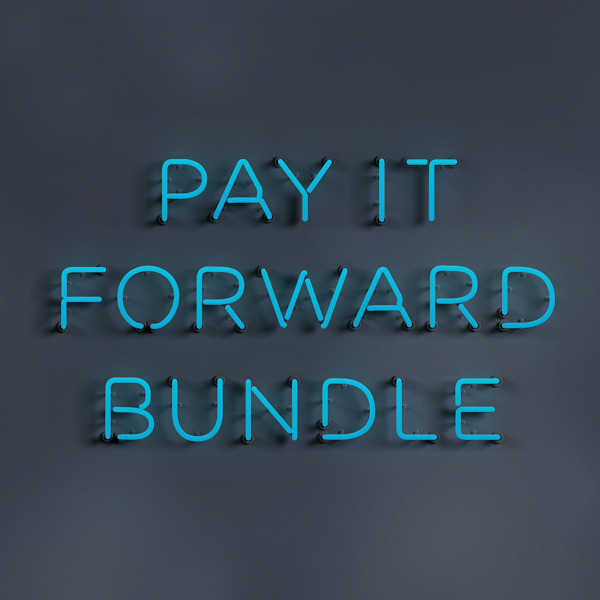Freshly Laundered 033 / Beth Sicheneder

This week we spoke to Beth Sicheneder, a junior designer based in Minneapolis. While she’s only just started along her career path, she already has some great advice we can all take to heart (especially for us introverts.) Read on.
CB: Tell us a little about yourself - how did you decide Graphic Design was right for you as a career?
BS: I’m a homegrown Minnesotan, nature loving, rock climbing, book-reading introvert (who also happens to dabble in graphic design). Current WIPs: Learning to play my Grandma’s old folk guitar and to make crepes without burning them to a crisp. (It’s important to always have a few hobbies that I can enjoy being terrible at.)
I want to have a really cool origin story I can share as to how I got started in art and graphic design. Some sort of miraculous “ah-ha” moment! But honestly I think it was just the only thing I really felt suited for. When I had to do times table quizzes in math class as a kid, I would quickly give up, turn the paper over and draw pictures instead. I mean really, the answers to the math facts were always the same – where’s the fun in that?
I’ve always loved the process of creating. Having a vision of something in my mind and being able to make it a real, tactile part of the world is wonderfully gratifying! And moreover – the product of creation can be different and unique and startling each time!

CB: Origin stories definitely don’t need to be miraculous to be cool - sometimes the truth is right there in front of us and we can see it the whole time! :) Doing what you have a natural aptitude for is the best way (in my opinion) to have a happy career. You’re currently a junior designer, correct? What have you learned in the two years you’ve been in the working world that school didn’t prepare you for?
BS: Yes, I’m working as a junior designer right now, and what haven’t I learned?! There’s definitely a steep learning curve that comes with moving from school to a real desk with real clients. One of the things I’ve come to realize is what a fine balancing act each project is. With each new piece I have to balance that big, grand vision the client has with a big, grand vision of my own. At no point will the result be 100% mine or 100% theirs. So much of it needs to be a harmonious and graceful balance.
Another thing I’ve learned is the approach for each new project needs to be different, because there’s no set formula for brewing up creative solutions. Even if you’ve done 500 logo projects, project 501 will be different. You need a new roadmap every time!

CB: How do you communicate to clients that their big, grand vision may not be the best solution?
BS: Usually by offering up another solution they may not have dreamed up on their own. It’s often about getting to the heart of their vision and expanding upon it so that with some collaborative effort, it can be made greater than it was before.

CB: You mentioned earlier that you’re an introvert. Do you ever find it difficult to bring your ideas to clients, especially if they might not be similar to what the client had wanted?
BS: I am! But my friends joke that I’m a “socially graced” one. I never have too hard of a time sharing ideas that might be different from what’s expected because I’m able to get excited about them and want people to know why they should be excited about them too! And I’m lucky to be a part of a larger team with other designers, strategists and account managers with a variety of strengths, so my voice will never be the only one bolstering up an idea. I’m learning the importance of setting expectations with clients so if the idea our team will be presenting is something unexpected, they’ll be prepared for it. Sort of like giving them floaties before pushing them into the deep end.
I do find as an introvert that long, full meetings tend to exhaust me. When I find myself feeling drained afterwards I know it’s time to find some quiet time to rejuvenate. Usually this means plugging into some music, kicking back and working on a solo task for a while.

CB: That’s great to hear your coworkers support your voice and vision with clients, it’s always so important to show a unified “front”! What kind of music do you listen to? What gets you ready to work again?
BS: Yes, it’s really quite wonderful! I’m happy to get to be a part of such a talented team. As far as music goes I tend to lean towards songs with more alternative, acoustic sounds to them. Most of the time I listen to the Current, a local Minnesota radio station with a big mix of music including some lesser known artists and lots of local talent. I have so much respect for people who make music and it’s great to tune in to artists that are successful locally. When I need to get into the creative mindset, all I need is a solid playlist, a sketchbook, and a steaming hot cup of green tea, no matter the season.

CB: Thanks Beth! It’s been fun chatting with you!
Sign up to see Beth’s one and only CB tee, Campersand, come back to the site. You can follow her on twitter or dribbble, and see more of her work on Behance or her personal website.












